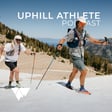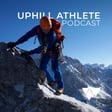
Chronicles of K2 with Jon Lawrie and Martin Zhor: Part 1
In our second episode of Voices of the Mountains, Steve and coach Martin Zhor, speak with one of their athletes, Jon Lawrie, who recently summited K2 without supplemental oxygen. Jon chronicles his experience on the mountain, from the trek to base camp, to the jeep ride back to a warm bed. Steve and Jon relate over the odd experience of life above 8000 meters and a tragedy Jon witnessed on the mountain. The discussion shows a glimpse of the difficulty of this type of climb and the precarious nature of humanity on the ledges of a mountain known for death. This is the first of a two-part episode around Jon’s experience training for and ultimately summiting K2 without supplemental oxygen.
If you'd like to reach us, email coach@uphillathlete.com or visit uphillathlete.com to learn more about our offerings.



















